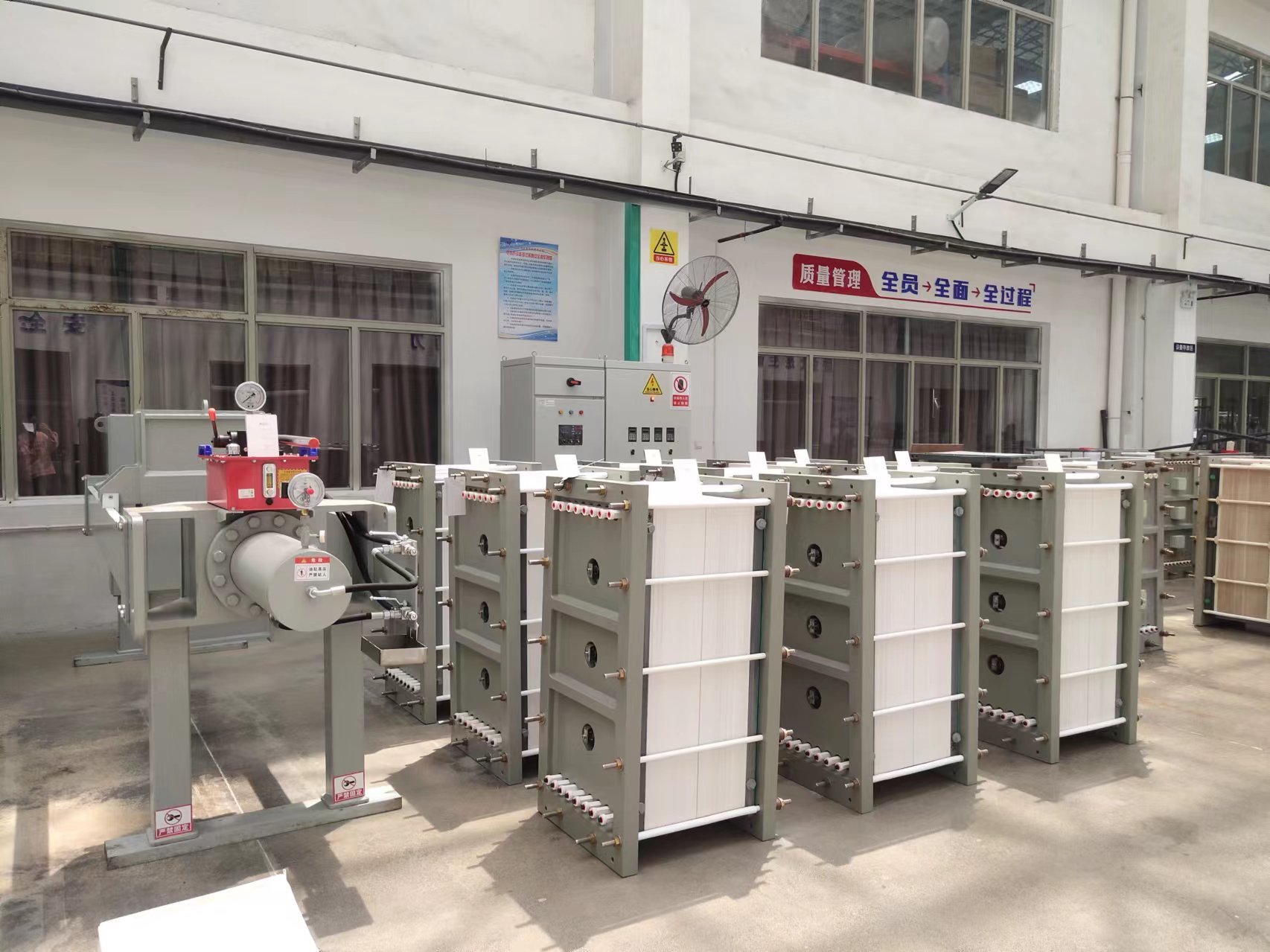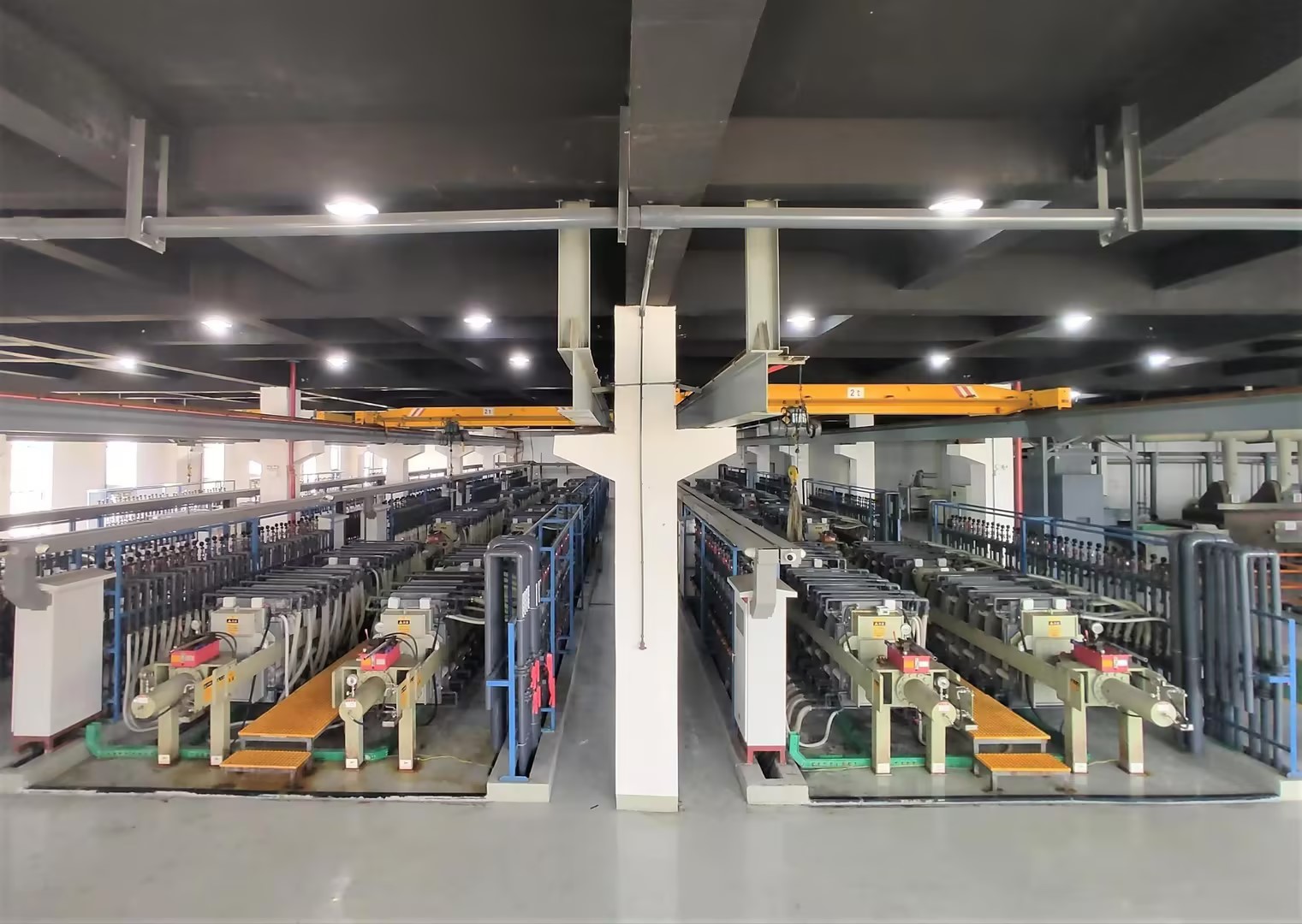06
2025
-
08
Electrodialysis: The "Resource Revolution" for Chemical/Pharmaceutical Wastewater, the Breakthrough from pollution Control to Recycling
Author:
The treatment of saline organic wastewater in the chemical and pharmaceutical industries has always been a difficult problem in the field of environmental protection. This type of wastewater contains high concentrations of inorganic salts such as sodium chloride and sodium sulfate, and is also mixed with refractory organic substances like antibiotic intermediates and aromatic compounds. Traditional processes have problems such as high energy consumption, heavy secondary pollution, and low resource recovery rate. Electrodialysis technology, with its electric field-driven membrane separation mechanism, is driving this field from "end-of-pipe treatment" to "resource recycling".
I. Technological Breakthrough: From Single Desalination to Organic/Inorganic Synergistic Separation Traditional electrodialysis focuses on the separation of inorganic salts. In the face of wastewater where organic and inorganic substances coexist, the new homogeneous ion-exchange membrane, through molecular-level design, introduces specific functional groups to form a "ion channel - organic repulsion" dual-functional structure. For instance, a certain pharmaceutical enterprise used modified polyethersulfone homogeneous membranes to treat saline antibiotic wastewater. Under an electric field intensity of 1.5V/cm, the sodium ion removal rate reached 98%, and the organic matter retention rate increased to 92%, breaking through the bottleneck of organic matter interfering with membrane separation. Bipolar membrane electrodialysis technology opens up a new path for the resource utilization of acids and bases. It generates H⁺ and OH⁻ through hydrolysis and dissociation, which can directly convert organic acid salts into free acids. In the treatment of citric acid wastewater, this technology converts sodium citrate into citric acid and sodium hydroxide, with an acid recovery rate of 95%. The by-product alkaline solution can be reused for fermentation, forming a closed loop. Compared with the traditional calcium salt precipitation method, solid waste is reduced by 90%, and the cost of treating each ton of wastewater is lowered by 400 yuan.
Ii. Process Innovation: Modular Integration addresses membrane fouling caused by high concentrations of organic matter in complex wastewater. Reverse electrode electrodialysis (EDR) achieves self-cleaning of the membrane surface through periodic electrode reversal. A certain dye intermediate enterprise adopted the EDR system. During the 12-hour operation cycle, the electrode was inverted once every 2 hours, reducing the membrane fouling rate by 75% and extending the continuous operation time from 30 days to 180 days. In combination with the pulsed electric field, energy consumption is reduced to 1.8kW·h/m³. Packed bed electrodialysis (EDI) combines ion exchange resin with electrodialysis to build an integrated system of "adsorption - regeneration - separation". When treating pesticide wastewater, EDI adsorbs organic matter through a resin bed, achieves in-situ regeneration of the resin under an electric field, and simultaneously concentrates inorganic salts to over 20%. This process reduces the energy consumption of the traditional three-effect evaporation from 120kW·h/t to 35kW·h/t, and the salt recovery purity reaches 99.2%, which can be directly used as raw material in the chlor-alkali industry.



Iii. Industry Application: From the laboratory to the industrial antibiotic production field, a certain enterprise adopts a combined process of "pretreatment + electrodialysis +MVR evaporation" to treat cephalosporin wastewater. Ozone is used for catalytic oxidation and degradation of organic matter in pretreatment. Electrodialysis reduces the salt content from 8% to 0.5%, and the MVR evaporator crystallizes the remaining salt into industrial-grade sodium chloride. The system achieves zero discharge of wastewater, recovers 1,200 tons of salt resources annually, and reduces hazardous waste disposal costs by 3 million yuan.
In the field of fine chemicals, a certain fragrance enterprise's wastewater contains benzoic acid, sodium chloride and trace amounts of heavy metals. By adopting a coupled process of bipolar membrane electrodialysis and diffusion dialysis, the recovery rate of benzoic acid is 92%, the purity of the sodium hydroxide by-product is 98%, and the heavy metals are deeply purified through chelating resin. The enterprise has transformed from a cost center for wastewater treatment to a resource output unit, generating an additional annual benefit of over 8 million yuan.
Iv. Technical and Economic Efficiency: Full life Cycle optimization
The economic benefits of electrodialysis have become prominent in its long-term operation. Take the treatment of 100m³/d pharmaceutical wastewater as an example. Its initial investment is 20% higher than that of traditional evaporation crystallization, but the operating cost is reduced by 45% (from 18 yuan /m³ to 9.8 yuan /m³), and the equipment life exceeds 10 years. Key indicators show that when the salt content of wastewater exceeds 3%, the cost advantage of electrodialysis is significant. When the concentration of organic matter is lower than 5000mg/L, the system stability remains above 95%.
V. Future Outlook: Integration of Intelligence and Materials
With the development of 5G and industrial Internet, electrodialysis is evolving towards intelligence. The AI optimization control system of a certain enterprise reduces energy consumption by another 15% by dynamically adjusting operating conditions through real-time monitoring of parameters such as membrane voltage and current density. In the field of materials, innovations such as graphene-modified ion-exchange membranes and 3D printed flow channel designs have increased membrane flux to 300LMH and enhanced anti-pollution performance by three times. Electrodialysis is reshaping the wastewater treatment model in the industry, from pollutant removal to resource recycling, from high energy consumption to green manufacturing. It not only solves environmental protection problems but also creates economic value. With continuous technological breakthroughs, it will play a core role in the field of zero discharge of industrial wastewater and drive the industry towards sustainable development.
Related Products
Practical application of nitrogen and fluorine removal technology for flue Gas Washing Wastewater in the Thermal Power, heating and coal-fired Boiler industries
2025-08-15
Membrane separation: Green and efficient acid recovery for rare earth metallurgical leachate
2025-08-13
Electrodialysis experimental machine: Technical Practice of Concentrating and purifying Waste acid
2025-08-11
Electrodialysis: The "Resource Revolution" for Chemical/Pharmaceutical Wastewater, the Breakthrough from pollution Control to Recycling
2025-08-06
Huanke Environmental Protection Technology
HOTLINE:
Address:Optoelectronic Industry Accelerator in Weifang Hi-Tech Zone, Shandong Province, China
Contact:Zhang Gong
WhatsApp:+8619953608211
Email:eco.eqpt@gmail.com


Consult

TikTok
Copyright © 2023 Shandong Huanke Environmental Protection Technology Co., Ltd
